Roicki — For the Kids to Succeed in My Math Class, I Needed to Build Relationships. Here’s the Formula I Used: Teacher + Students = Team
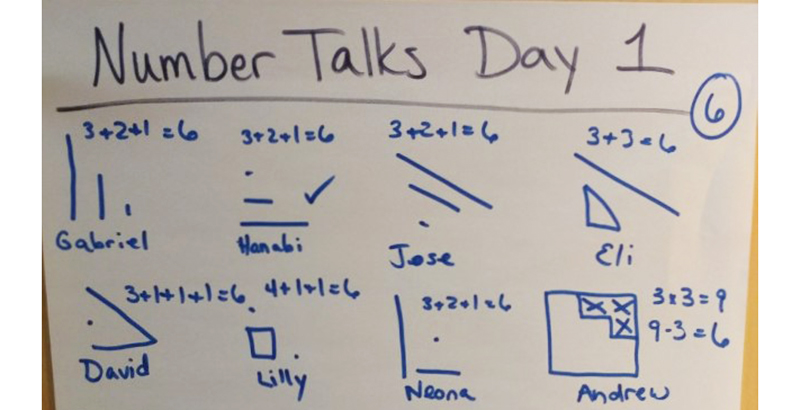
Relationships. They are the bedrock of a harmonious and effective classroom environment.
At the beginning of my teaching career, I didn’t really understand the importance of building relationships. I thought my job was to teach content. Over the next 15 years in the classroom, though, I realized that the rules and consequences I imposed and the rigidity with which I taught did little to make my students feel like valued members of a shared learning community. Student interactions during lessons were brief and often riddled with conflict, usually focused on whether answers were right or wrong. Arguments over correctness provided few opportunities to develop positive relationships with each other.
The idea that relationships are critical to student learning became clear to me through experience in the classroom, where I found most of my instructional time being used to intervene in student arguments. Conversations with school counselors and much trial and error also helped shape my rethinking about the power of relationships. But with so much content to teach, like many classroom teachers, I wondered how to build social skills and positive relationships with and among my students. The very real constraints on teachers’ instructional time often make us feel that we must choose one or the other. Here are some strategies I used for developing social skills in students and building a strong class culture.
Establish classroom norms for sharing, helping and teamwork
Last year, when I was teaching third grade, I took time to establish a solid and safe learning environment. Rather than starting to teach math right away, like many of my colleagues, I spent the beginning weeks of school developing a set of norms with my students that would guide our actions for the year. One part of that development focused on collaboration, which would be a critical component of the math learning.
First, I challenged my class to complete the Broken Circles task. The students had to silently and systematically exchange pieces of different colored circles until everyone had a complete circle. To succeed, they had to rely on each other to notice needed pieces and pass them around, as gesturing and pointing were not allowed. Afterward, we discussed the challenge, and I asked my students to think about what they liked and didn’t like about working in groups. The resulting chart led to the co-creation of a set of T.E.A.M. norms.
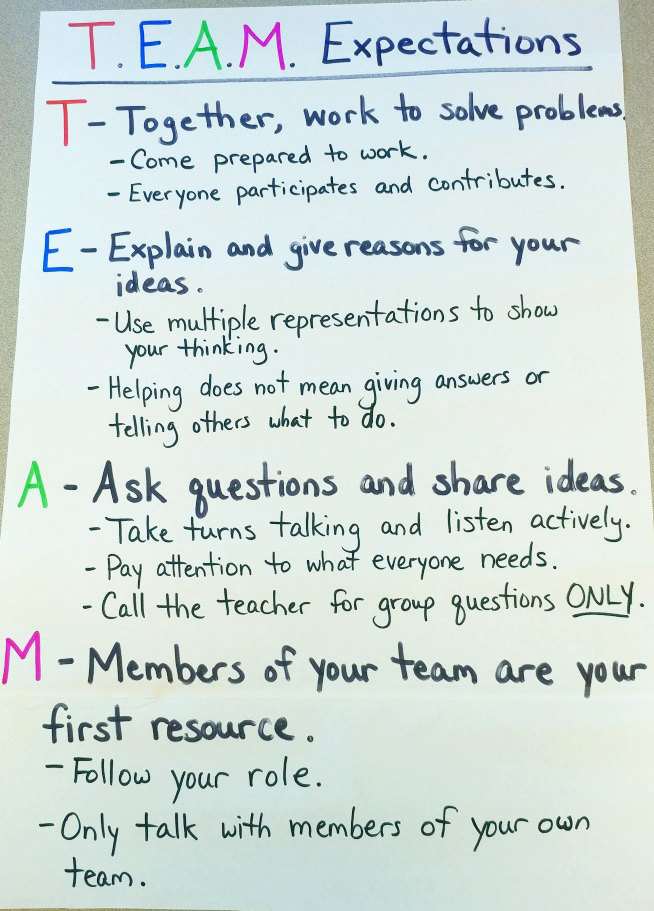
As a class, we wove three important ideas into these norms. First, the social skill of sharing is essential to the collaborative process. Students liked having opportunities to talk about the work and listen to each other, so we included this in our official expectations, along with practices such as taking turns, listening actively, attending to others’ needs and coming prepared to do the work.
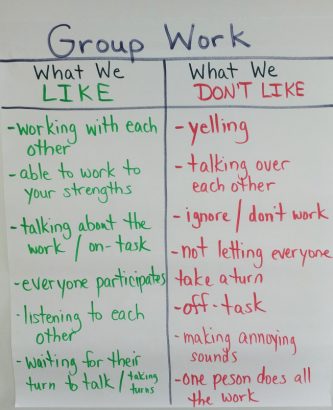
We also discussed the importance of helping others — not only agreeing that working with classmates is an important aspect of successful group work, but also digging deeper to clarify what are appropriate ways to help. Based on our previous discussions about learning through challenge, my students thought it would be helpful to ask questions and work to make sense of one another’s thinking. That led to the creation of an anchor chart, providing some sentence starters for different situations that occur during group work.
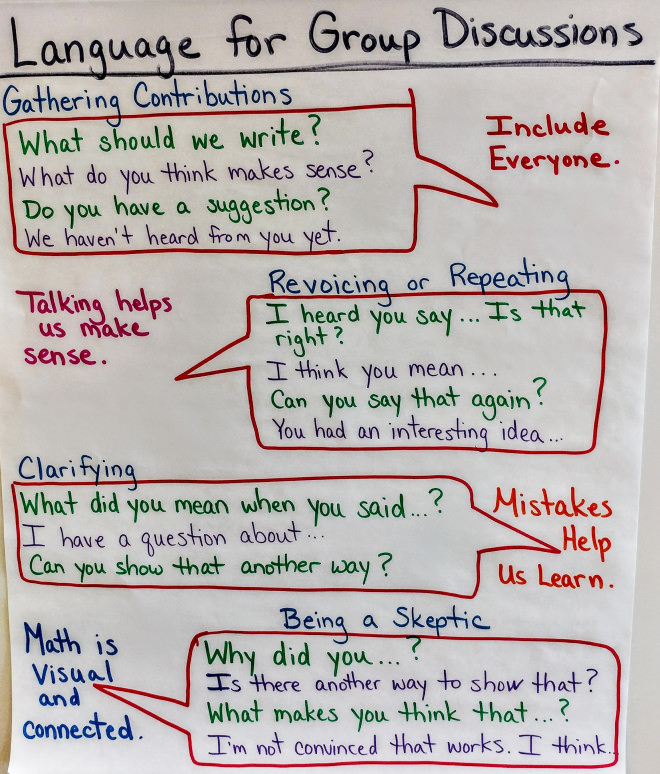
To ensure that students would have opportunities to practice our T.E.A.M. expectations, I designed group tasks with specific requirements, such as giving everyone a different colored marker to identify individual contributions and expecting that everyone in the group be able to fully explain how the problem was solved.
The overall result of this work set my students up for success throughout the school year. Involving my students in the creation of the norms helped them take more responsibility for attending to them during work times. Learning to work collaboratively was new to them, so at first they needed frequent redirection and guidance. Revisiting the norms on a regular basis encouraged the students to begin using them without being reminded.
Elicit and compare varied approaches to problem-solving
In most math lessons, too much emphasis is placed on the answers to problems. This isn’t intentional; most curricular materials primarily consist of closed tasks, meaning there is one correct answer or one implied solution method. I wanted my students to be able to not only solve problems together but also recognize the power in discussing diverse ways of thinking. So I began spending my lesson preparation time considering ways to open the problems my students would work on.
Using open tasks elevates discussions to another level. Comparing multiple strategies and representations leads to analysis of underlying mathematical structures and can reveal which solutions are most efficient. Students learn that considering others’ thinking can help them identify new and improved strategies. Incorporating multiple answers into discussions leads students to consider the reasonableness of the answers in context and take on the perspectives of others to determine best-fit solutions. This, in turn, helps students develop empathy toward others when working inside and outside school.
One of the most effective strategies I found to help students understand the power of varied approaches was Number Talks. Developed by educators Ruth Parker and Kathy Richardson almost three decades ago, these short daily discussions focus on number relationships and the structure of numbers in basic computations. In general, the teacher poses a problem, visually or orally, which students solve mentally. Students then share the strategies they used, while the teacher records the methods for display. The class then discusses the types of strategies used, their similarities and differences, and evaluates them for accuracy and efficiency. Because they are brief, Number Talks are a perfect daily warm-up that also reinforces the importance of various ways of thinking. An example of the results of one of my class’s Number Talks is shown here.
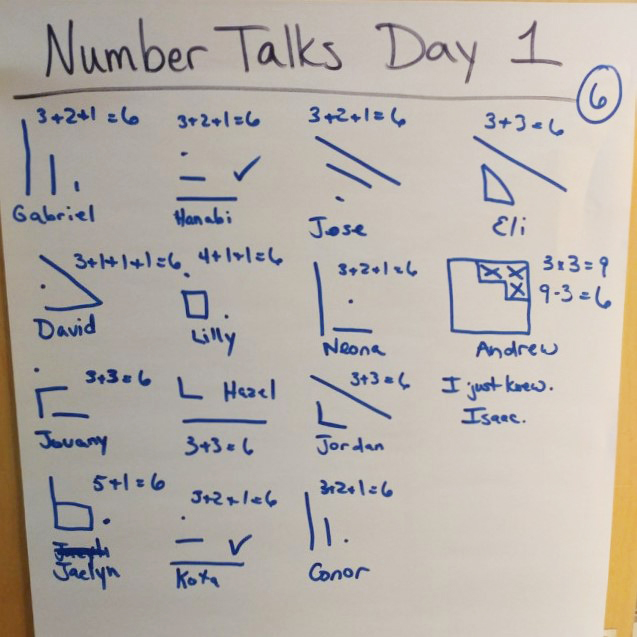
Connections before content
One of my major takeaways from starting the school year this way was that relationships need to be established and nurtured before content can become meaningful. Students need a foundation of social skills on which to build trusting relationships with teachers and each other and be comfortable within the school environment. While the pressures of teaching an already packed curriculum constantly weigh on our minds, I hope we can continue to find places to pause, take a breath and focus on skills that will make a difference in all aspects of learning.
Joe Roicki is a program specialist on the professional development and implementation success team for Great Minds’ pre-K-12 Eureka Math curriculum. He taught math to Grades 2-5 students in New York, Florida and Washington states and supported K-8 classroom teachers for 16 years, until the 2017-18 school year.
Get stories like these delivered straight to your inbox. Sign up for The 74 Newsletter

;)